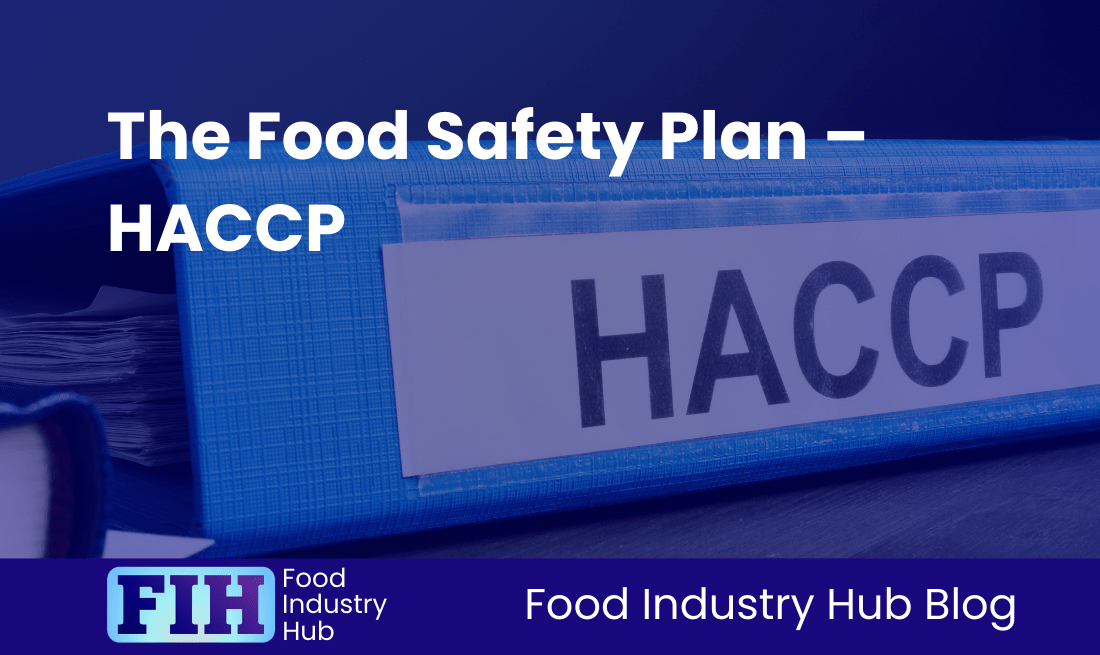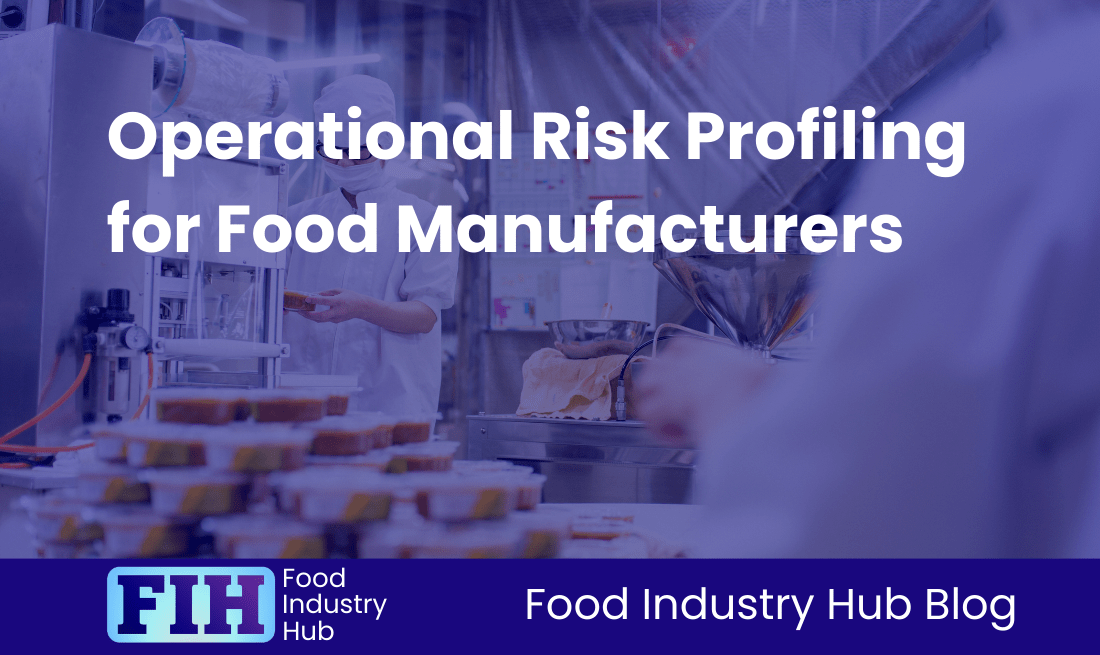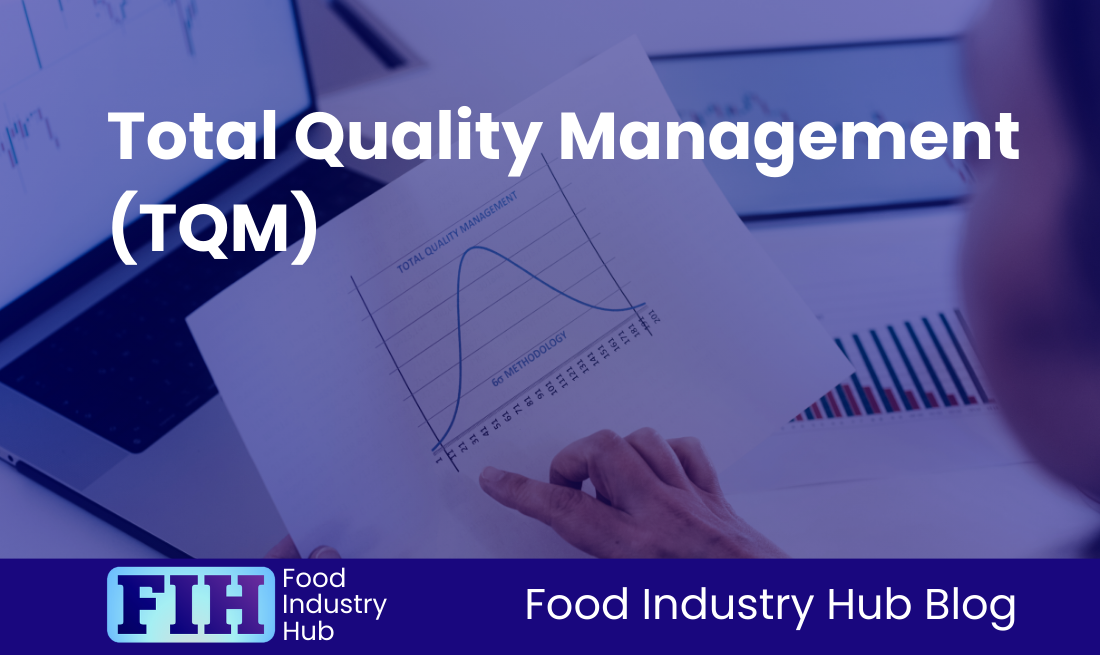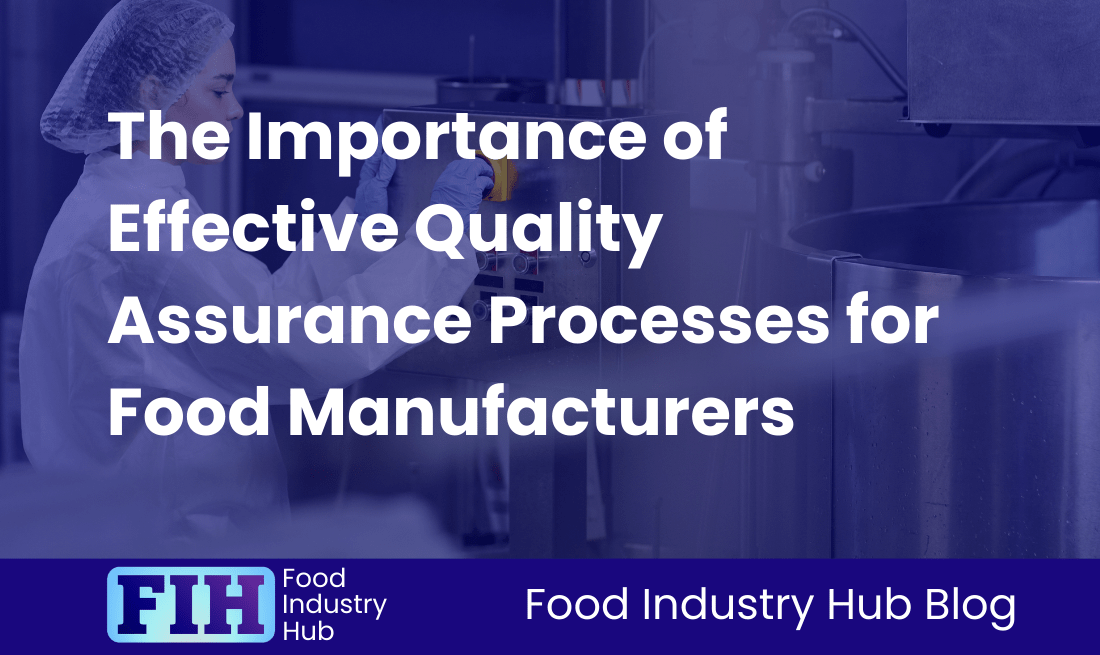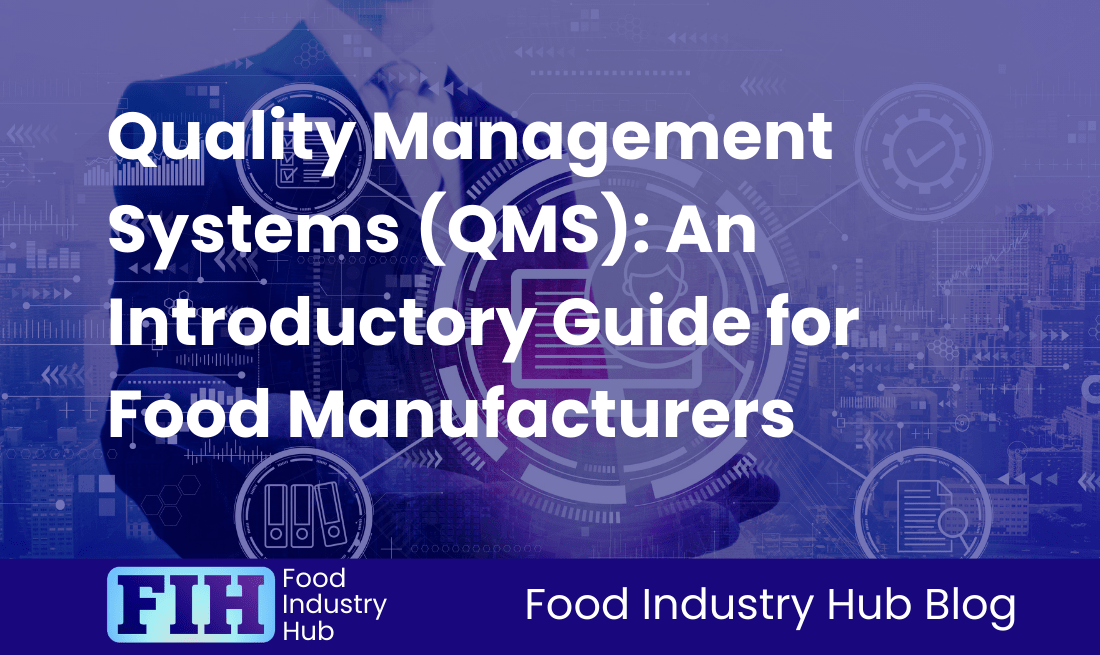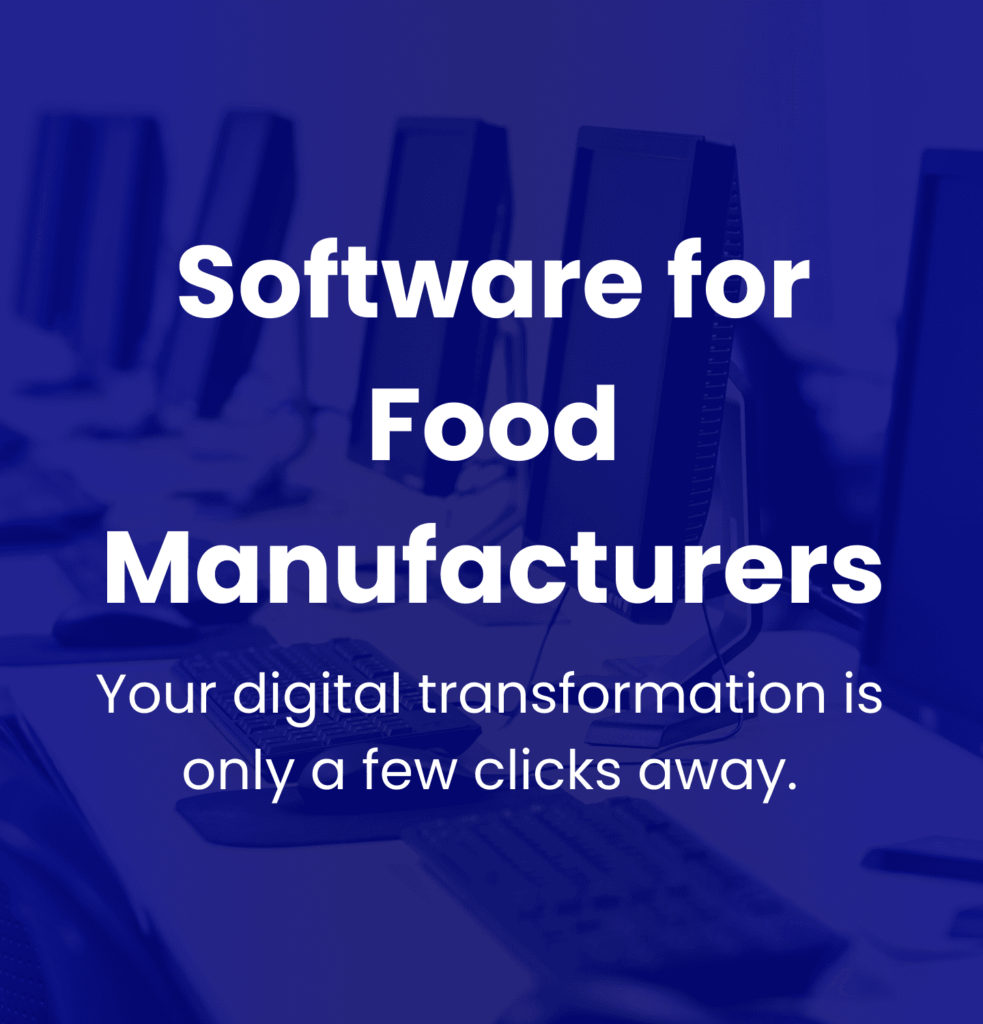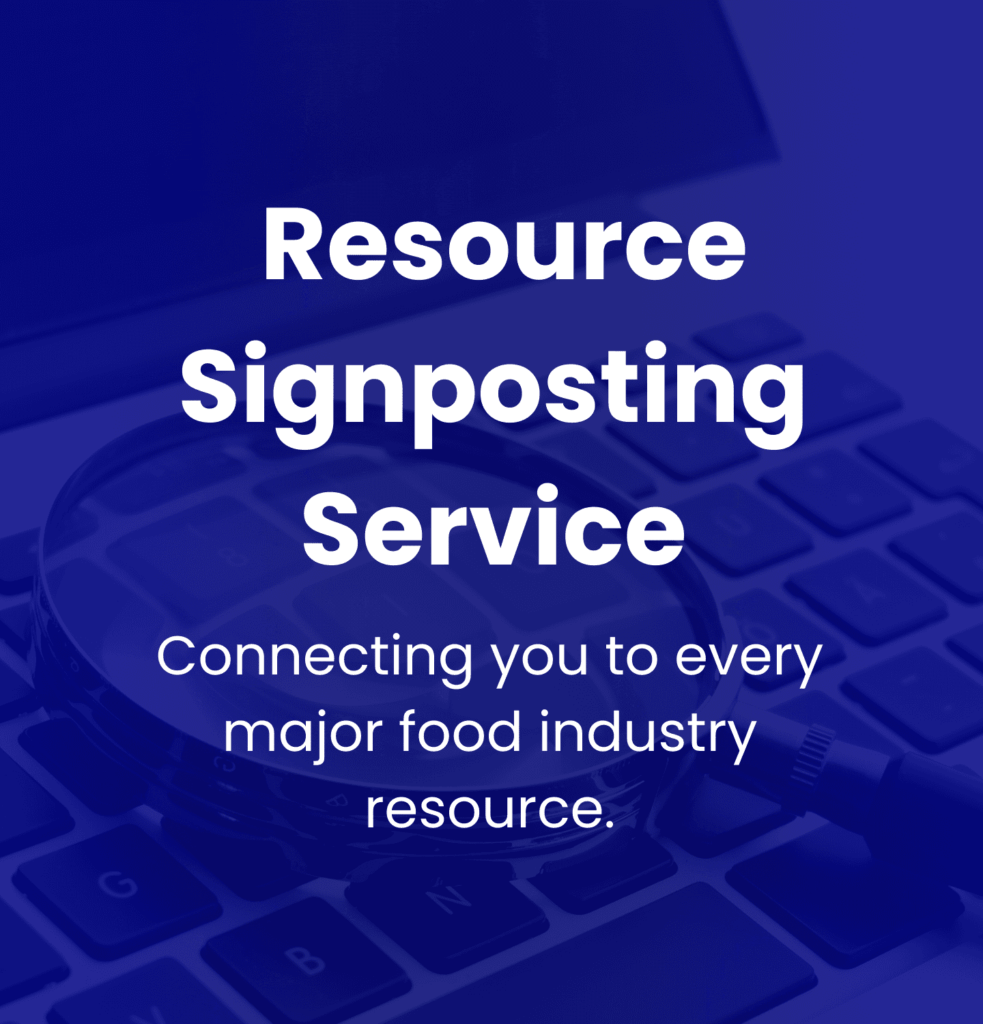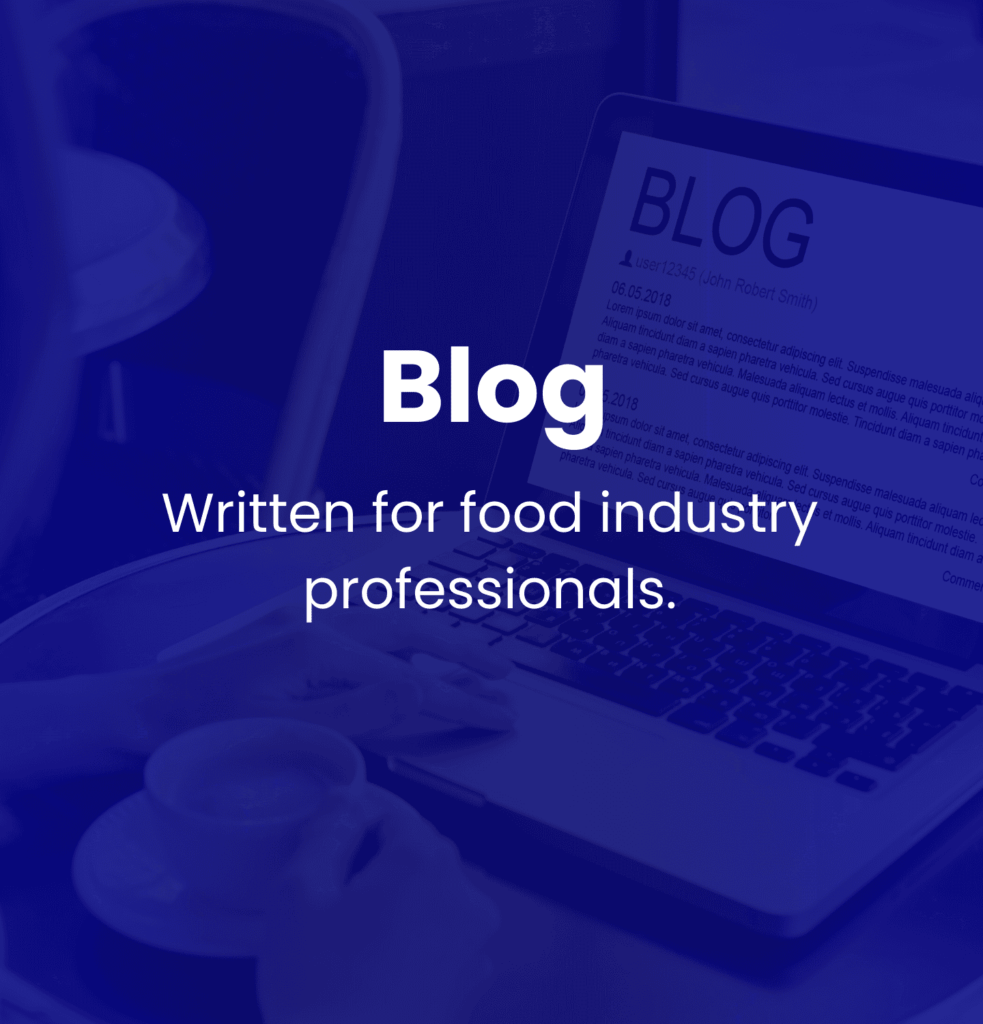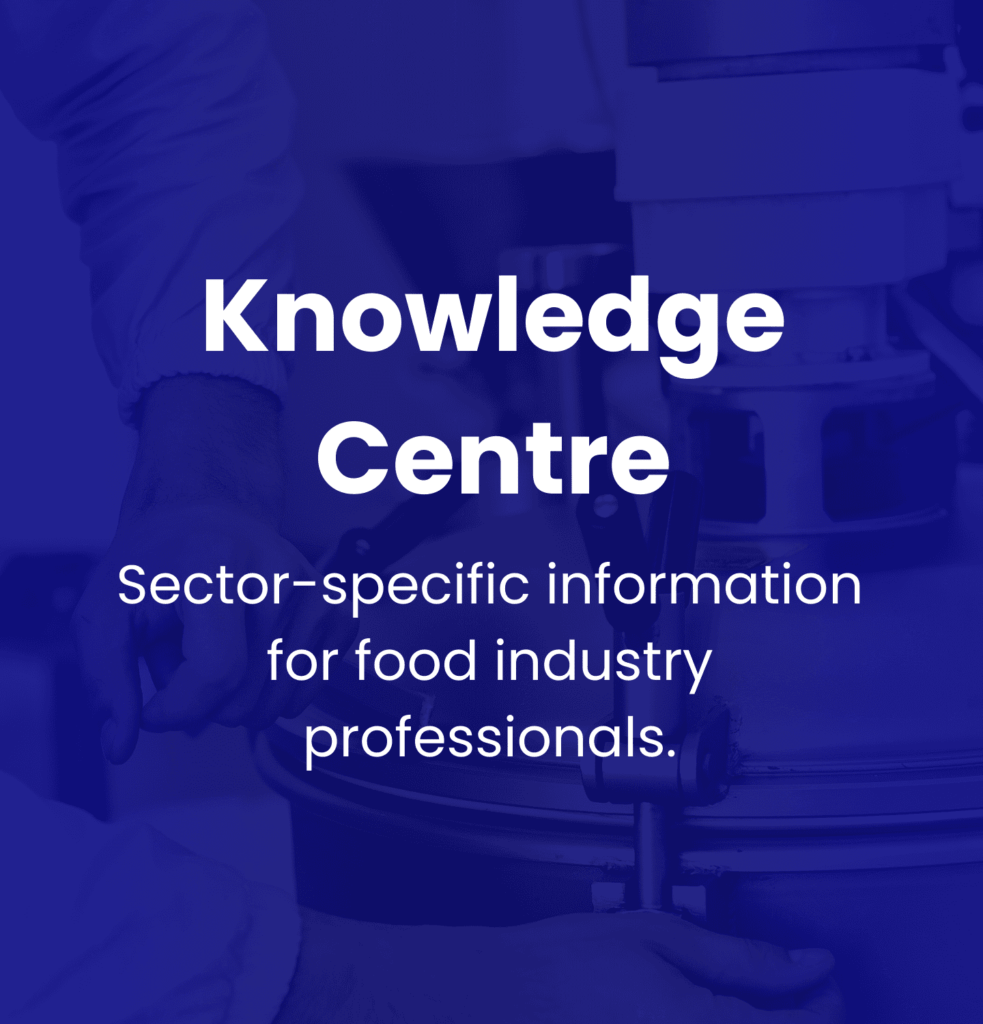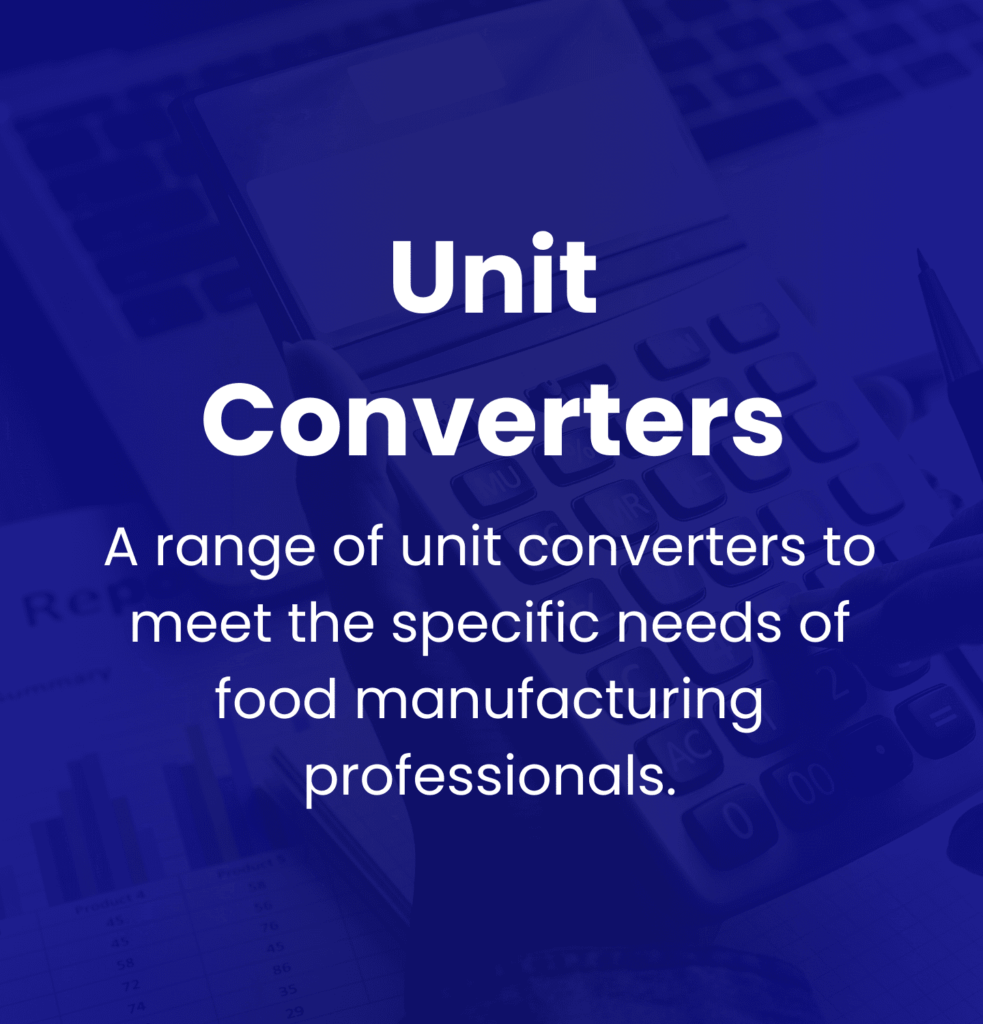Know: Hazard Analysis Risk-Based Preventive Controls (HARPC)
Contents
Introduction
Key Takeaways
An Examination of the Regulatory Framework and the Global Applicability of HARPC
Understanding the Core Components of a HARPC Plan
Practical Steps in the Implementation and Operationalisation of a HARPC Plan
Discerning the Key Distinctions between HARPC & HACCP
Overcoming Compliance Challenges and Identifying Solutions with HARPC
Embracing Future Trends and Technological Integration in HARPC
Conclusion
Introduction
The safety and quality of food are inherent factors directly influencing public health. The impact is notable on consumer’s wellbeing, thereby highlighting the importance of food manufacturers in curbing foodborne illnesses. This is achieved through diligent measures to eliminate contaminants from their products. Prominently, the Hazard Analysis and Risk-Based Preventive Controls (HARPC) framework has been a supportive element aiding this safety drive, especially within the American food manufacturing sector.
Hazard Analysis and Risk-Based Preventive Controls (HARPC)
HARPC has emerged as a systematic approach that manages food safety hazards by pinpointing and controlling the threats before they become problematic. Instead of addressing issues once they surface, focus is shifted towards preventive measures that stifle risks in advance, thus making the food manufacturing process safer. Additionally, to ensure these controls’ potency, there’s a necessity for frequent verification and re-evaluation. Proper documentation of this process is also a mandatory aspect enhancing the success of audits and inspections.
The Foundational Principles of HARPC
The relevance of HARPC is best recognised through its foundational ethos, which offers a comprehensive approach to food safety. Going beyond the traditional concentration on biological, chemical, and physical hazards, HARPC incorporates the evaluation of radiological hazards and intentional adulteration threats. The framers of the U.S. Food Safety Modernization Act (FSMA) introduced HARPC under the FSMA legislation in 2011. The act aimed to bolster food safety regulations by mandating that food processing facilities implement robust preventive measures to preserve public health. Subsequently, the Preventive Controls for Human Food guidelines were finalised in September 2015, advocating detailed food safety plans, integrating extensive hazard analyses and preventive control measures.
HARPC’s Global Impact
HARPC’s influence extends worldwide, transforming the food safety dynamics by endorsing rigorous safety standards. It prompted manufacturers to adopt preventive measures, thereby aiding in the reduction of foodborne illnesses and boosting consumer trust in the food supply.
This article will illuminate various aspects of HARPC, discussing its primary components, contrasting it with the Hazard Analysis and Critical Control Points (HACCP) system and providing practical insights for implementing HARPC in food manufacturing. We will delve into HARPC’s global implications and its contribution to upgrading standards of food safety across the industry.
Key Takeaways
Hazard Analysis and Risk-Based Preventive Controls (HARPC) play a significant role in the global food manufacturing industry with a primary focus on a proactive approach to safety in food. The Food Safety Modernization Act (FSMA) stipulates that food facilities are required to perform comprehensive risk assessments, showcasing the shift in focus to prevention measures over reactive responses. This allows manufacturers to minimise the risk of foodborne illnesses, emphasising HARPC’s importance in maintaining food safety and establishing consumer trust.
HARPC Core Components
The essential components of HARPC include hazard analysis, risk-based preventive controls, diligent monitoring, corrective actions, rigorous verification practices, and detailed record keeping. Implementing these factors necessitates detailed hazard analyses and the establishment of preventive controls, corroborated by scientific proof. Robust monitoring systems should be set in place accompanied by comprehensive records for compliance. This aids in the development of an all-encompassing food safety plan that aligns with existing Good Manufacturing Practices (GMP) and enriches food safety frameworks.
Comparison between HARPC and HACCP
A notable difference between HARPC and HACCP is their respective proactive and reactive perspectives. While HACCP emphasises control at specific points to manage known hazards, HARPC advocates for wider risk assessments and preventive strategies that address both known and potential hazards. This forward-thinking approach makes HARPC adaptable to potential risks, bolstering the effectiveness of food safety management systems.
HARPC Compliance Challenges
Complying with HARPC presents several obstacles for food manufacturers including the complexity of developing a comprehensive food safety plan and securing scientific proof for preventive controls. Businesses, especially smaller ones, must work on training, investing in appropriate technology, and keep up stringent monitoring practices to navigate through these compliance hurdles.
Emerging Technological Trends
Evolving technological trends are considerably shaping the implementation of HARPC. Advanced automation systems for process monitoring and digital platforms for documenting streamlined records are a few instances of how technology can enhance food safety management. Predictive analytics for proactive hazard identification are another prime example of technology’s potential benefit to compliance with HARPC standards. By utilising these innovations, food manufacturers can elevate operational efficiency and increase responsiveness, leading to improved outcomes in food safety.
Food Industry Hub Management Systems can significantly boost the effectiveness of your food safety and quality management system, leading to improved confidence and elevated quality assurance throughout your operations.
An Examination of the Regulatory Framework and the Global Applicability of HARPC
The Hazard Analysis Risk-Based Preventive Controls (HARPC) is a cornerstone of the Food Safety Modernization Act (FSMA) in the United States, requiring food manufacturers to establish thorough safety plans. These plans encompass hazard analysis, preventive controls, continual monitoring, rectification processes, and verification procedures. Adopting this proactive approach not only enhances the safety of food supplies but also aligns significantly with the global movement towards anticipatory food safety management systems [Source: HARPC Compliance].
Relationship Between FSMA and HARPC
The genesis of HARPC can be traced back to the FSMA’s enactment in 2011, which introduced a paradigm shift in food safety practices from a reactionary to a preventive stance. An integral part of this Act, HARPC concentrates on identifying and mitigating potential threats leading to foodborne diseases [Source: Penn State Extension]. The FSMA’s Preventive Controls Rule mandates food facilities that are registered with the FDA integrate HARPC plans. This ensures a proactive management of food safety hazards, especially for those entities that manufacture, process, pack or warehouse human food [Source: FDA].
Mandatory Scope and Legal Application
The HARPC regulations apply to all commercial food operations within the U.S., spanning those that manufacture, process, package, or store human food for consumption. The regulations also cover international businesses exporting food products to the U.S., requiring them to be heavily committed to risk assessment and preventive controls. However, it is worth noting that certain entities such as retail food outlets, restaurants, specific agricultural operations and a few product categories are exempted from HARPC regulations.
Regional Regulatory Differences and Implications for Manufacturers
U.S. Regulations
In the United States, the execution of HARPC is facilitated through the Preventive Controls Rule, which identifies proactive risk management as a core element. Manufacturers are required to formulate a detailed food safety plan that encompasses continuous monitoring and corrective measures for identified hazards to ensure compliance with HARPC guidelines.
UK Regulations
The UK follows a framework significantly influenced by EU regulations, primarily prior to Brexit, making predominant use of HACCP (Hazard Analysis and Critical Control Points) principles. These principles, although similar to HARPC, follow a technically distinct approach. UK manufacturers are obliged to abide by domestic regulations, inclusive of the Food Safety and Hygiene (England) Regulations of 2013, which prioritise risk-based approaches.
EU Regulations
In the European Union, the food safety framework requires compulsorily embedding a HACCP-based approach, making it mandatory for all food businesses to initiate a hazard analysis and critical control points system. This strategy mirrors HARPC’s approach but resides within a broader EU legislative context, most notably the General Food Law Regulation (EC) No 178/2002, which highlights the need for inclusive food safety management systems.
Implications of HARPC for Global Supply Chain Businesses
Businesses operating within global supply chains face formidable challenges when complying with multiple regulatory frameworks. Conforming to HARPC in the U.S. requires the establishment of a robust food safety management system capable of including diverse international regulations. Companies exporting to the U.S., for example, must ensure their safety protocols are in line with HARPC standards, irrespective of differing domestic requirements. Confirming suppliers’ compliance with relevant safety standards becomes obligatory in this context, given its significance to preserving the integrity of the food supply chain.
Comprehensive Compliance Requirements and Exceptions
Core Compliance Requirements
The compliance requirements of HARPC involve the following critical facets:
- Hazard Analysis: Identifying biological, chemical, and physical hazards in the food supply chain.
- Preventive Controls: Implementing effective controls to minimise or prevent these hazards.
- Monitoring and Verification: Regular monitoring to ensure preventive controls are effective and procedures for corrective actions when necessary.
- Record-Keeping: Full documentation of all activities related to the food safety plan.
Exceptions
Certain facilities such as low-risk food establishments and specific agricultural activities could qualify for exemptions from HARPC requirements. In addition to these, organisations manufacturing meat and poultry products under USDA oversight follow different regulatory guidelines.
HARPC, although specifically mandated in the U.S. under FSMA, and its principles of proactive risk management resonate with food safety systems globally. Manufacturers are tasked with navigating the intricacies of these varied regulations to maintain product safety and ensure compliance in the increasingly interlinked marketplace.
Understanding the Core Components of a HARPC Plan
Hazard Analysis Risk-Based Preventive Controls, better known as HARPC, is a framework implemented by the Food Safety Modernization Act (FSMA). This system seeks to encompass and help mitigate potential risks in food manufacturing environments. For an effective HARPC plan, there are several essential cogs that significantly enhance food safety management.
Conducting Detailed Hazard Analysis
A comprehensive hazard analysis forms the bedrock of a HARPC plan. This analysis, focused on identifying known or likely hazards, categorises threats into four key groups: biological, chemical, physical, and radiological. Hazard analysis within the HARPC system takes into account both naturally occurring and deliberately introduced hazards, offering a broader scope than the Hazard Analysis Critical Control Points (HACCP) system which primarily zeroes in on critical control points. To bring in a comprehensive hazard analysis, food manufacturers should closely evaluate every stage of processing from raw materials to final packaging, ensuring all potential dangers are effectively addressed [Source: USDA].
Types of Preventive Controls
In a HARPC plan, custom-made preventive controls are needed to tackle the hazards identified during the analysis phase. These controls fall into several sectors: process controls that prevent contamination during the manufacturing process, sanitation controls that secure clean conditions in the facilities, and food allergen controls that curtail cross-contamination with allergens. All preventive controls should be backed by scientific evidence, be effectively implemented to minimise or eradicate identified hazards, and be substantiated with clear documentation demonstrating the methodologies applied.
Importance of Rigorous Monitoring
Effective monitoring is a significant part of a HARPC plan—it confirms that preventive controls are operating as intended. A written monitoring programme specifying how, when, and by whom these controls will be monitored must be established. Regular inspections and detailed logs, documenting monitoring activities, assist in identifying any deviation from the pre-set controls. Thanks to proactive monitoring, food manufacturers can promptly address any issues and stop potential food safety incidents from escalating.
Executing Corrective Actions
Effective corrective actions are vital when preventive controls falter. A HARPC plan should include written procedures that break down the specific steps required to address any deviations caught during monitoring. Such documentation plays a critical part in ensuring traceability and responsibility within the food safety management process. Corrective actions could consist of testing alternative controls and ensuring operations return to equilibrium, thwarting future failures.
Implementing Verification Methods
Verification makes sure that both preventive controls and corrective actions are effective and operating as expected. This process involves systematic verification routines, including regular audits and assessments to ascertain the potency of preventive controls. Organisations should frequently scrutinise records, identifying any gaps or possible areas of improvement in their HARPC execution, ensuring that the plan remains germane and efficient.
Documentation and Record-Keeping
All facets of a HARPC plan are underpinned by exhaustive documentation and meticulous record-keeping. Key records are those related to hazard analysis, preventive controls, monitoring data, and enacted corrective actions. Documentation is integral to regulatory compliance and offers an essential tool to ensure continuous amelioration in food safety practices. Effective record-keeping also promotes accountability and helps organisations quickly respond to audits or inspections.
A robust HARPC plan, focusing on these core elements, enables food manufacturers to effectively tackle food safety challenges, abide by regulatory requirements, and ultimately shield public health.
Sign-up for the Food Industry Hub Mail Service
We regularly produce new content for food industry professionals, and the Food Industry Hub Mail Service is the best way to stay up to date with the latest additions.
Signup today to be added to the Food Industry Hub mailing list.
Practical Steps in the Implementation and Operationalisation of a HARPC Plan
Building a Cross-Functional Team for HARPC Implementation
Achieving optimum Hazard Analysis and Risk-Based Preventive Controls (HARPC) plan implementation requires an inclusive and organised team approach. This involves the formation of a diversified, functional team that includes professionals from different areas such as quality assurance, sanitation, plant operations, and senior management. Of these individuals, those with knowledge in food microbiology and process engineering are particularly valuable to ensure a thorough understanding of food safety risks. It’s important to appoint a Preventive Controls Qualified Individual (PCQI) to lead the strategy’s efficiency and regulatory compliance. This designated individual leads the tasks of hazard identification, preventative controls development, and food safety plan maintenance.
Importance of an In-Depth Flow Diagram
Creating a complete flow diagram plays a key role in identifying and managing potential hazards within the HARPC plan. This visual presentation provides a step-by-step guide of the food production process, clearly highlighting critical control points where potential contamination risks may occur. With a detailed process outline, flow diagrams aim to enhance hazard analysis, help in the effective implementation of preventive controls at each hazard point, and provide consistency in food safety management. Hence, it’s essential to regularly update the diagram to reflect any adjustments in processes or protocols [Source: AIB International].
Practical Guide for Setting Up Preventive Controls, Conducting Verification Activities, and Implementing Recall Plans
To effectively establish preventive controls, it’s necessary to conduct a comprehensive hazard analysis to determine potential risks throughout the operations. This includes the development of specified controls such as sanitation procedures, allergen control measures, and monitoring plans to mitigate these risks.
Verification activities play a role in ensuring that preventive controls are working as planned. This can be achieved by conducting regular audits, inspecting environmental conditions, and carrying out product testing. Such measures aim to ensure regulatory compliance and identify areas for improvement.
A structured recall plan is a necessity. This plan includes the procedures for identifying unsafe products, informing appropriate authorities, and managing customer and distributor communications during crisis situations. An effective recall strategy aids in minimising potential damage and restoring trust.
Role of Advanced Digital Tools and Software
Progressive digital tools and software have emerged as a significant solution for enhancing the efficiency of HARPC planning. Such technologies aid in simplifying record-keeping, automating verification and monitoring processes, and providing real-time insights into the overall food safety management system.
Software can automate routine inspections and documentation, thus reducing chances of manual errors and ensuring regulatory compliance. Introduction of these digital solutions not only increases operational efficiency but also facilitates better management of supplier relationships and their adherence to food safety standards, assisting in an efficient evaluation of risk throughout the supply chain.
Successful implementation of a HARPC plan integrates multiple elements such as team collaboration, comprehensive process mapping, robust preventive controls, and the strategic use of digital tools. These collectively aim at ensuring food safety compliance and operational superiority within the food manufacturing sector.
Discerning the Key Distinctions between HARPC & HACCP
HACCP (Hazard Analysis and Critical Control Points) and HARPC (Hazard Analysis and Risk-Based Preventive Controls) are pivotal frameworks in food safety. Despite this shared role, they differ on many fronts, including their methodologies, scope and regulatory requirements.
Variances in Scope of Hazards
HACCP mainly addresses allergenic, biological, chemical, and physical hazards. These are identified and managed at designated Critical Control Points (CCPs) during the production process. CCPs are in compliance with rigorous regulatory standards dictated by the USDA and FDA for specific food sectors such as meat, poultry, seafood, and juice production. In these sectors, intensive CCP management is vital to ward off foodborne illnesses.
In contrast, HARPC covers a more diverse range of hazards, including radiological risks, natural toxins, unapproved food additives, and intentional adulteration threats such as food fraud. The Food Safety Modernization Act (FSMA) necessitates this broad approach. It encourages preventive measures across the bulk of food production and handling facilities in the U.S., going beyond the conventional worries associated with HACCP.
Variations in Control Measures
HACCP employs a process-focused methodology, honing in on CCPs. It demands that measurable limits be established at each point. This approach ensures hazards are managed at crucial stages in production, though it may have limitations in adapting to developing risks or varying processing conditions.
Conversely, HARPC provides increased flexibility due to its emphasis on preventive controls grounded in risk assessments and scientific data. These preventive measures extend beyond isolated process points to include wider operational practices such as supplier management and environmental monitoring. This flexibility enables food manufacturers to address a larger variety of hazards in a customised way, leading to a more inclusive food safety strategy.
Divergence in Documentation Requirements
The documentation needs under HACCP are standardised and systematic, requiring record-keeping related to hazard analysis, monitoring activities, and corrective actions specific to identified CCPs.
In contrast, HARPC necessitates comprehensive documentation covering a wider array of food safety measures. This includes a detailed hazard analysis, the identification of preventive measures, monitoring protocols, corrective actions, and validation methods. It also calls for a mandatory recall plan. This all-encompassing approach to documentation is designed to enhance transparency and streamline ongoing verification processes in food safety management systems.
USA Regulatory Approaches
In the USA, With regard to regulations, HACCP mainly falls under the jurisdiction of the USDA, particularly for meat and poultry products. Certain FDA regulations govern seafood and juice products. The approach and requirements can differ significantly by sector, and are often influenced by retailer demands and auditing standards. Note that these applicability restrictions for HACCP are not necessarily evident in other regions such as the EU.
In contrast, HARPC is applicable to the majority of food-related facilities and is rigorously regulated under the FSMA. It mandates adherence to preventive controls aimed at mitigating a variety of larger risks. There are certain exemptions, but the general trend leans towards a more comprehensive regulatory framework that addresses a broad range of food safety threats.
Recognising these significant differences is vital for professionals in food manufacturing when implementing efficient food safety management systems. The shift from HACCP to HARPC mirrors a broader comprehension of risk management in food safety, aligning with modern regulatory expectations and public health goals.
Overcoming Compliance Challenges and Identifying Solutions with HARPC
The task of imbibing Hazard Analysis Risk-Based Preventive Controls (HARPC) within food manufacturing procedures entails numerous compliance challenges. However, these challenges can be deconstructed, understood, and solutions can be drawn through an organised and systematic approach.
Analysis of Compliance Challenges
The journey of integrating HARPC into daily operations often proves daunting for food manufacturers, given the detailed nature of its requirements. One significant puzzle is the intricacy of hazard analysis. HARPC mandates manufacturers to conduct an in-depth hazard analysis to identify, evaluate, and control potential hazards throughout the production process. This process can be particularly challenging and extensive, more so for facilities catering to diverse product lines, wherein several factors need to be assessed to promise comprehensive compliance [Source: Food Safety Magazine].
In addition, the factor of resource intensiveness for reanalysis can be quite a hurdle to cross. HARPC guidelines necessitate food safety plans to undergo a review at least every three years, or during significant process changes. This stipulation can impose considerable pressure on the resources within an organisation, as ongoing evaluations can require noteworthy time and financial investments. Appointing individuals with sufficient knowledge and proficiency to oversee preventive controls is no small matter, and the lack thereof might result in training gaps.
The Do’s and Don’ts of Reanalysis and Practical Solutions
The demands of HARPC reanalysis call for both strategic planning and innovative solutions. To relieve this demand, businesses can employ digital technologies that streamline the practices of tracking and documentation, thereby automating data collection and examination. Harnessing these tools can diminish the time and workforce required, and also enhance the accuracy of the documentation for compliance. Firms should also think about consistently weaving review cycles into their operations, allowing them to update safety protocols proactively, warding off procedural chaos and hurried evaluations.
Strategies to Integrate Existing Food Safety Systems with HARPC Requirements
Manufacturers already operating under existing food safety frameworks, such as HACCP, can find substantial advantages in harmonising these systems with HARPC compliance norms. An exhaustive review of the current procedures is crucial to identify features that can be fluently fitted into the HARPC structure. For example, manufacturers can sustain Critical Control Points (CCPs) identified in HACCP, allowing them to effectively utilise resources while ensuring compliance with HARPC regulations. Continuous improvement also needs to be a part of the workplace ethos, encouraging regular updates and adaptations to maintain relevance in a continuously changing regulatory landscape.
Identifying Training Gaps and Methods to Bridge Them
Addressing training gaps within an organization is an essential element for the successful execution of HARPC. Regularly conducting training needs assessments will help pinpoint knowledge and skill deficits among employees. Affirming these gaps enables organisations to devise tailored training programmes, emphasising on key aspects of HARPC including preventive controls, monitoring, and corrective actions. Deploying practical scenarios and hands-on learning can deepen the understanding and help employees apply food safety practices more effectively. Providing continuous learning opportunities, such as workshops or refresher courses, will ensure that all staff remain informed and skilled in food safety practices.
Potential Effects of Non-Compliance and Preemptive Strategies
Discrepancies in adhering to HARPC norms can lead to serious consequences for food manufacturers, including severe regulatory penalties that could range from substantial fines to even shutting down facilities. The ramifications could also extend beyond monetary losses, severely affecting a company’s reputation and eroding consumer trust, eventually influencing market access. Therefore, the adoption of cautious strategies is key. Regular internal audits can help identify compliance issues prior to official inspections. Additionally, developing an effective risk management framework that anticipates potential compliance issues will equip organisations to address them preemptively and minimise risks associated with non-compliance.
By adopting these strategies, food manufacturers can successfully navigate the challenges associated with HARPC, certifying compliance while upholding food safety and quality throughout their operations.
Embracing Future Trends and Technological Integration in HARPC
The Role of AI in Amplifying Hazard Analysis and Risk Management
Artificial intelligence (AI) is reshaping food safety through improvements in hazard analysis and risk management within Hazard Analysis Risk-Based Preventive Controls (HARPC) frameworks. AI, with the power of machine learning algorithms, analyses enormous datasets to pinpoint patterns of contamination or adulteration in food products. This predictive ability gives food manufacturers the advantage of foreseeing potential hazards, thereby putting preventive measures in place before they become major safety incidents. In addition, AI-powered tools enhance the precision of advanced sensors that are designed to detect microbial pathogens or chemical contaminants, thus reducing the likelihood of contaminated food reaching consumers.
Infusing IoT Sensors for Real-Time Sanitation Monitoring
Internet of Things (IoT) devices are important in strengthening sanitation controls. They provide real-time monitoring of important parameters such as temperature, humidity, and pH levels. These sensors send data continually to centralised systems, allowing key stakeholders to remotely monitor food safety metrics and respond quickly to departures from standard norms, thereby stopping spoilage and microbial growth. This incessant monitoring aligns perfectly with HARPC requirements for documentation and accountability, revolutionising how food manufacturers manage food safety throughout the supply chain.
Novel Approaches for Food Fraud Mitigation and Their Relevance to HARPC
Food fraud poses a significant challenge in maintaining food safety, making the incorporation of innovative mitigation strategies within the HARPC framework crucial. Harnessing cutting-edge analytical techniques, such as AI for spotting patterns indicative of fraud and blockchain for verifying the authenticity of ingredients across the supply chain, food manufacturers can boost their defensive measures against fraud. This integration within HARPC underscores the importance of conducting assessments of fraud risk alongside traditional hazard analyses. Such all-encompassing approaches enhance compliance, preserve product integrity, and enable consumer trust in food safety practices, thereby contributing to a safer food supply.
Inclusion of these technological advancements within HARPC frameworks not only amplifies the effectiveness of food safety procedures but also advocates a proactive approach to risk management in the food manufacturing industry. This fusion fortifies compliance with evolving regulatory standards whilst simultaneously tackling the challenges posed by food safety and fraud issues, ultimately shielding public health.
Conclusion
As an integral part of the regulatory framework in the food manufacturing industry, Hazard Analysis and Risk-Based Preventive Controls (HARPC) plays an essential role, particularly attracting attention under the Food Safety Modernisation Act (FSMA). HARPC fortifies food safety by implementing preventive controls and buttressing these measures with robust monitoring, corrective actions, and verification strategies. HARPC’s applicability transcends national borders, aligning with international food safety practices and thus making it applicable to food manufacturers worldwide.
Core Components and Guidelines for Implementation
Key elements of HARPC include:
- Hazard Analysis: This involves the identification and assessment of potential hazards at every stage of food production, encompassing biological, chemical, physical, and radiological risks.
- Preventive Controls: This encompasses the formulation, implementation, and documentation of measures designed to avert or downplay identified hazards. This may involve process controls, safety equipment, sanitation measures, and supplier control procedures.
- Monitoring: This encompasses the frequent observation of preventive controls to authenticate their efficacy, which includes routine inspections and the maintenance of logs.
- Corrective Actions: This involves establishing procedures for addressing any failure in preventive controls, ensuring adequate responses are documented and acted upon.
- Verification: This consists of conducting regular checks to confirm that preventive controls and corrective actions are effective and that the HARPC plan is being adhered to consistently.
- Record Keeping: This entails maintaining extensive documentation of hazard analysis, monitoring activities and verification for compliance and audits.
Implementation necessitates the establishment of a comprehensive food safety plan, using tools such as process flow diagrams and digital management solutions for facilitating compliance and traceability.
Key Differences between HARPC and HACCP
Though both HARPC and HACCP (Hazard Analysis Critical Control Points) prioritise food safety, they exhibit significant differences in scope and requirements.
- Origin: HARPC, introduced under FSMA in 2011, addresses a wider range of hazards than the HACCP system, which was developed in the 1960s for NASA. HACCP mainly focuses on allergenic, biological, physical, and chemical hazards.
- Coverage of Hazards: Unlike HACCP, HARPC also recognises additional hazards such as radiological and economically motivated threats.
- Supplier Verification: HARPC places emphasis on including suppliers and their activities in the verification process, thus enhancing the comprehensiveness of the safety system. This element is regarded as a prerequisite programme for HACCP.
- Recall Plan: HARPC demands a mandatory recall plan, absent in HACCP, showcasing HARPC’s greater commitment to proactive risk management in food safety.
Compliance Challenges and Emerging Trends
Struggles in complying with HARPC often arise from insufficient documentation and inefficient monitoring systems. However, emerging trends indicate an escalating integration of technology in the sector, with digital platforms improving record-keeping and providing insightful data that facilitate and streamline compliance processes. As the industry landscape rapidly evolves, the focus on supplier verification and adaptive food safety plans becomes increasingly important.
Recognising the importance of training for designated Preventive Controls Qualified Individuals (PCQIs) is pivotal for successful implementation and compliance with HARPC, thereby cultivating a safety-conscious and proactive culture within food manufacturing organisations.
Reaffirming HARPC’s Significance
By initiating a systematic approach to identifying and controlling potential hazards throughout the manufacturing process, HARPC substantively strengthens food safety measures. Its emphasis on prevention, rather than response, protects consumers from foodborne illnesses and injuries, a necessity in the broad scope of today’s global food supply chain. By fostering a robust food safety culture within the food manufacturing industry, HARPC becomes essential in upholding stringent consumer safety and trust standards.
About The Food Industry Hub Knowledge Centre
The Food Industry Hub knowledge centre delivers informative content on a variety of topics pertinent to the food manufacturing industry.
You can return to all topics by clicking here.
From The Food Industry Hub Blog
Expanding on this topic with related content from our blog.

